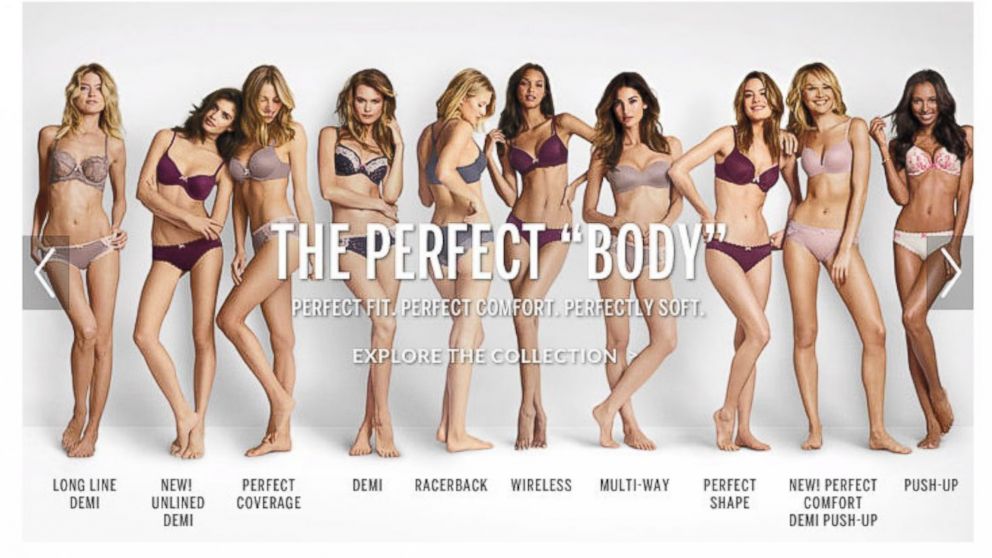The face of the fashion industry has for a large majority of time in the advertising world been the blond, caucasian, slim women. By a large number of fashion brands they promote this type of woman as the ideal, conveying this woman to have the idealistic lifestyle and appearance so that consumers her aspire to achieve a lifestyle like hers, and therefore buy into the brand.
However, the face of fashion has changed over the last 20 years - the industry understanding that it has to become more diverse as the fashion market changes to incorporate new economies as they emerge and develop. The face of fashion has to change to be representative of all aspects of the market, so that they appeal to consumers from all areas so they can buy into the brand by seeing a representation of themselves replicated in the brands imagery and advertising.
An example of how the market is hitting back to the lack of diversity is with Victoria's Secret latest campaign, called "the perfect body" yet featuring 10 size 8 photoshopped models. The image sparked controversy with a online petition being signed by over 30,000 women asking them to change the tagline and supported by the twitter hashtag "#iamimperfect". Underwear brands including Dear Kate and JD williams retaliated creating their own 'perfect body campaigns' of women of all sizes.
An example of how the market is hitting back to the lack of diversity is with Victoria's Secret latest campaign, called "the perfect body" yet featuring 10 size 8 photoshopped models. The image sparked controversy with a online petition being signed by over 30,000 women asking them to change the tagline and supported by the twitter hashtag "#iamimperfect". Underwear brands including Dear Kate and JD williams retaliated creating their own 'perfect body campaigns' of women of all sizes.
As this change has become more prominent, with the market clearly diversifying, the question is that whether the fashion advertising and its imagery should follow suit - representing varied ethinicities, sizes and ages more strongly in the work. But, to ensure that in the future of the fashion industry the representation of a variety of ethnicities becomes the norm through variation in model casting, should fashion institutions educate new designers/promotion students to think about diversity in order to make up and coming fashion more commercially viable. The presentation of fashion in advertising, whether in campaigns, online or catwalks should represent the cross section of society in modern Britain and the wider market.




No comments:
Post a Comment